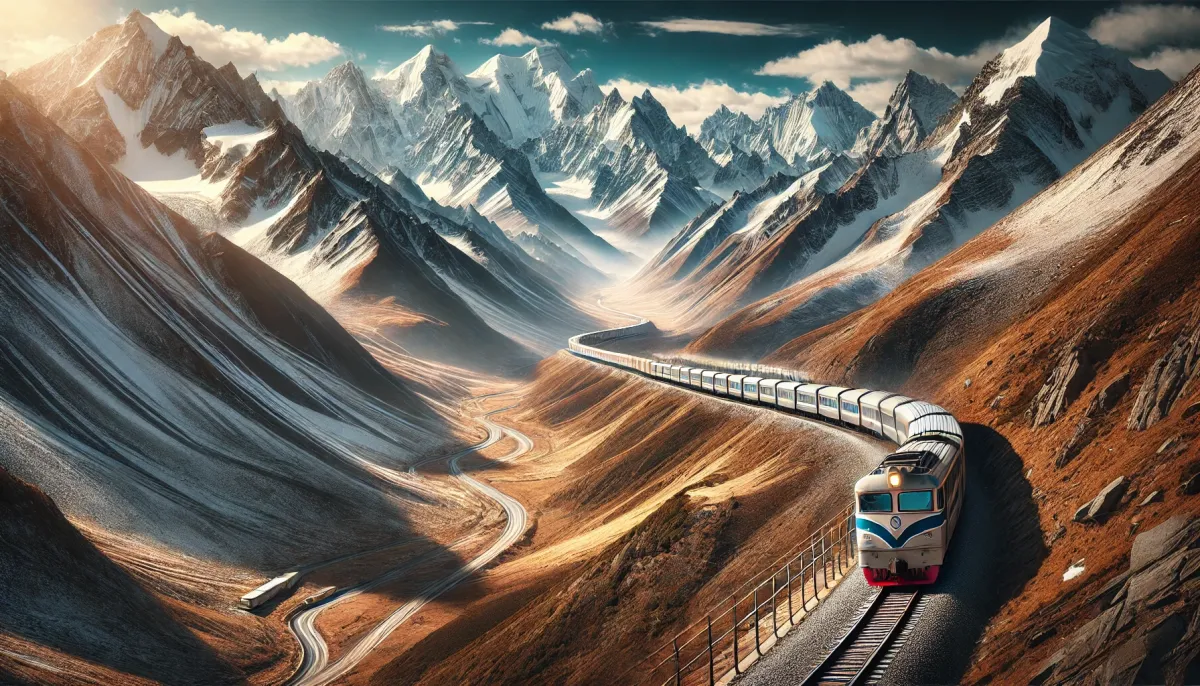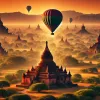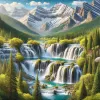Hey fellow adventurers! Mark here, your friendly neighborhood globetrotter, back with another thrilling tale from my Asian escapades. This time, I'm taking you on an epic journey aboard the Qinghai-Tibet Railway, a feat of engineering that snakes its way across the world's highest plateau. Forget luxury; this is about experiencing something truly unique, a testament to human ingenuity and the breathtaking beauty of the Tibetan landscape.
The Breathtaking Qinghai-Tibet Railway: A Journey Like No Other
I've always told my family, the worst thing is to be surrounded by stunning scenery while someone next to you complains incessantly. Let's face it, negativity can ruin even the most incredible views. This trip on the Qinghai-Tibet Railway, however, was an incredible experience of both the high-altitude and amazing views. Forget your worries and embrace the adventure!
The Qinghai-Tibet Railway isn't just any train ride; it's a journey through history and nature. Built over 58 years, conquering challenging terrains and harsh conditions, it stands as a testament to China's engineering prowess. The sheer scale is mind-boggling: a 1,956-kilometer (1,215-mile) track traversing some of the most challenging landscapes on earth. That’s a long trip!
While the entire journey takes about 25 hours, the experience is unforgettable. The train itself is equipped with oxygen supplies, and the windows remain closed for safety reasons. That's why my footage was limited in some sections, but trust me, the views are worth it! I was truly amazed by this marvel of engineering and the views from the train.
Seven World Records: A Journey Through Superlatives
The Qinghai-Tibet Railway holds an impressive seven world records:
| Record | Description |
|---|---|
| Highest Altitude Railway | World's highest railway line, traversing the Tibetan Plateau. |
| Longest High-Altitude Line | Longest high-altitude railway line on Earth. |
| Longest Distance Through Permafrost | Longest stretch of railway track crossing permafrost regions. |
| Highest Railway Station | Tanggula Railway Station, the world's highest railway station. |
| Highest Permafrost Tunnel | The highest altitude tunnel built through permafrost. |
| Longest Permafrost Tunnel | The longest tunnel built through permafrost. |
| Longest High-Altitude Permafrost Bridge | The longest bridge built over permafrost on the high-altitude plateau. |
Beyond the Rails: Exploring the Wonders of Qinghai Lake and Beyond
After completing this incredible journey on the Qinghai-Tibet Railway, we reached the stunning Qinghai Lake. Known locally as "Koko Nor," this is China's largest lake, a vast expanse of saltwater stretching out before you. The views were simply breathtaking.
Our journey continued to other amazing locations.
White Stupa (Bai Ju Si): A Sanctuary of Peace and Art
Next, we visited the White Stupa (Bai Ju Si), a remarkable monastery nestled in the mountains. The atmosphere inside was unlike anything I'd ever experienced – dark, serene, and filled with the weight of history. The "Ten Thousand Buddha Pagoda" within is a treasure trove of Tibetan art, boasting over a thousand statues that blend Indian, Nepali, and Han Chinese styles. It's a true museum of religious art, though the low light made photography challenging.
Even the Tangkas (Tibetan thangkas or scrolls) were incredible. I learned that their value can range dramatically, from a few hundred dollars to hundreds of thousands! It truly showcases the art and culture of Tibet.
Tashilhunpo Monastery: A Seat of the Panchen Lamas
Our next stop was Tashilhunpo Monastery, a grand monastery in Shigatse, Tibet. It’s the largest Gelugpa (Yellow Hat) monastery in the Tsang region of Tibet, and it's historically significant as the seat of the Panchen Lamas. The monastery's massive scale and the intricate details of its architecture were awe-inspiring. The history woven into its walls is palpable, stretching back centuries. It was founded by the 1st Dalai Lama. The monastery's vast grounds, with their intricate architecture, reflect centuries of Tibetan spiritual and cultural tradition. The experience was truly mind-blowing! It was amazing to learn the history, the different sects of Buddhism and how they all co-exist.
Understanding the Three Regions of Tibet: Ü-Tsang, Amdo, and Kham
Many travelers, myself included, often hear about Ü-Tsang, Amdo, and Kham, the three traditional regions of Tibet, but the distinctions aren't always clear. Ü-Tsang, centered around Lhasa, comprises most of the Tibetan Plateau. Amdo, mostly in Qinghai, Gansu, and Sichuan, is known for its vast grasslands. Kham, stretching across eastern Tibet, Sichuan, and Yunnan, encompasses the region of the famed Khampa people. Understanding these divisions helps appreciate the cultural diversity within Tibet.
The Joy of Travel: Embracing Diversity and Letting Go of Expectations
The most important part of any journey is not just the destination, but the people and experiences along the way. Whether you’re a history buff or someone who just wants to take photos and enjoy nature, there's something for everyone in Tibet. Respecting diverse perspectives and avoiding negativity makes the entire experience richer and more enjoyable. Let’s be kind, not judgemental and enjoy the journey!







